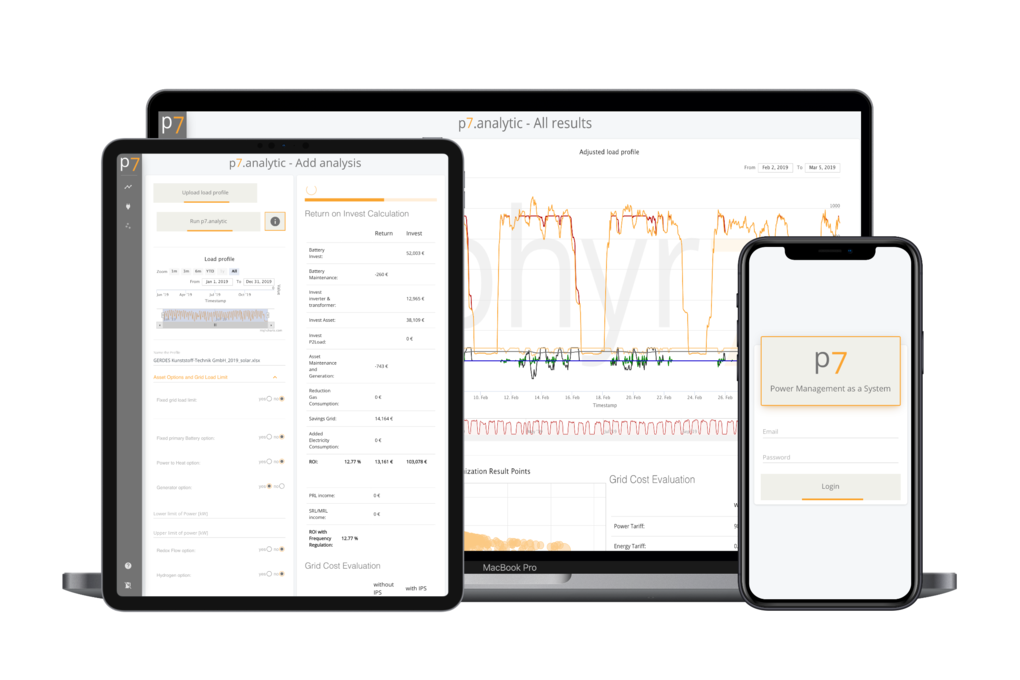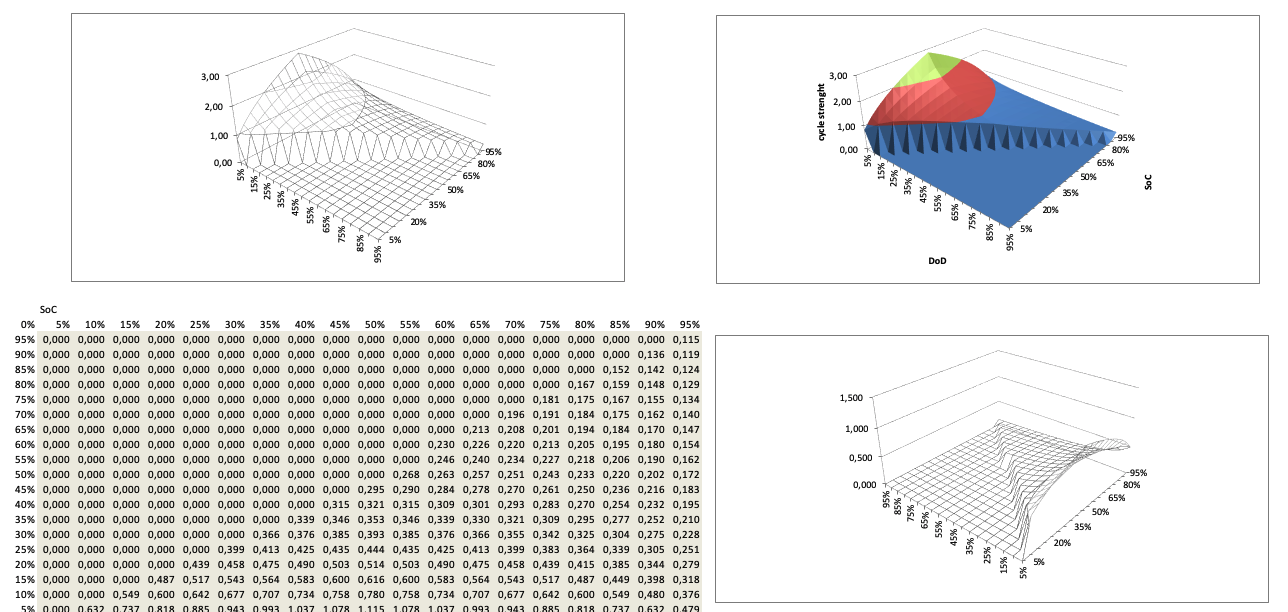- Home
- Company
-
Products & Service
Products & Service
- Sustainability
- Careers
- Contact
-
-
With the help of p7.analytic, we can simulate and analyze the entire energy flow in the company, from electricity procurement and storage through to electricity distribution. The results of this simulation from company data enable the optimal design of an energy storage system (Hybrid ESS) tailored to the customer and the integration of additional energy systems. As a “digital twin”, p7.analytic continuously analyzes and optimizes the energy flow and operation of the Hybrid ESS in the company.
The simulation is also the data basis for p7.control, which shares the optimisation algorithm.

Depending on the individual performance curve and other specific requirements of the customer, p7.analytic determines a customised system design with the most suitable technologies.
Using an economic framework, the software calculates and maximises the reliability and economic benefits of the energy management system.

p7.analytic takes into account all relevant technical and electrochemical properties of a storage technology. These include, for example, the fast charging and discharging capability (C-rate), the service life (cycle stability and calendar service life), temperature behaviour and the energy charging efficiency of a particular battery technology.
All of these factors are interdependent on other factors (depth of discharge/DoD, state of charge/SoC, state of health/SoH, temperature range), are linked to each other and are mapped in digital twins.